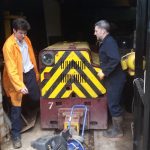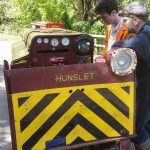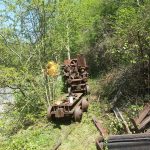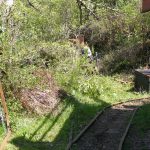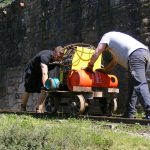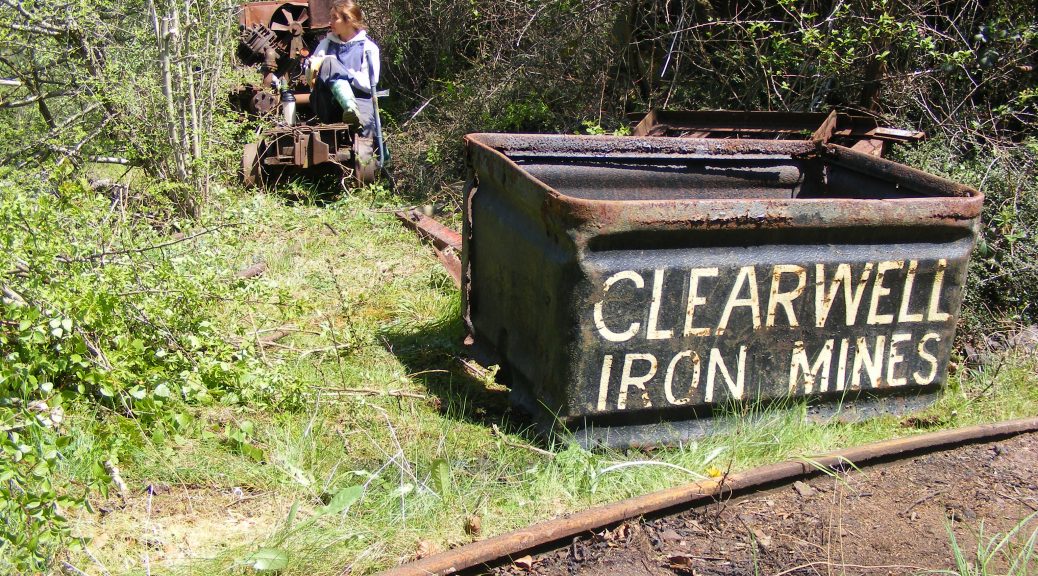
✂️ Clearance at Clearwell
As part of the Open Weekend of 14th-15th May, volunteers from the Lea Bailey Light Railway Society went to Clearwell Caves to service and run the Hunslet Flameproof locomotive No. 7446 and to take a look at some of the other rolling stock stored outside. Despite having not run since last year, the locomotive started on the first attempt, and performed several demonstration runs for visitors, much to the enjoyment of the café staff who had come to empty the bins.
Another job which was started was to cut back some of the hawthorn, brambles, and other assorted undergrowth on the elevated siding at the top of the incline to allow the rolling stock stored there to be moved for the first time for many years. We hope to be able to do a little bit of cosmetic restoration to prevent these items from deteriorating, with the eventual aim of a proper restoration in the long term, although some of the items may end up as static exhibits.
Of immediate interest however, is a compressor mounted on a 4-wheel bogie, which despite being outside for some time, has already been made to turn over freely. An end-tipper wagon will be very useful for track work here and at Lea Bailey, with an initial inspection showing that it will only need minimal repairs to some corroded platework. Of course more cutting-back will be required before these vehicles can be retrieved.
The single-bladed point leading to the siding had been heavily overgrown with grass and other greenery and a thin layer of turf had to be removed from the top of the rails. The resident artist-blacksmith MissFire was in the process of loading equipment into a large van as part of her move to larger premises, and so our work on this part of the track took place in between trips from the workshop to the van using a small 4-wheeled wagon.
Once the point was free to move — a process that also involved the removal of a surplus dog-spike — the Hunslet was summoned to push the W227 up the incline and onto the siding. Because this set of points is notorious for derailments, particularly of the WR5 locomotive, the final few yards was done by hand using crow bars and pieces of angle-iron as levers, and a not inconsiderable amount of brute force. The W227 is now clear of the running line and perhaps the sunshine will allow a coat of red oxide to be applied to protect it from the less pleasant weather that is sure to return soon enough?
